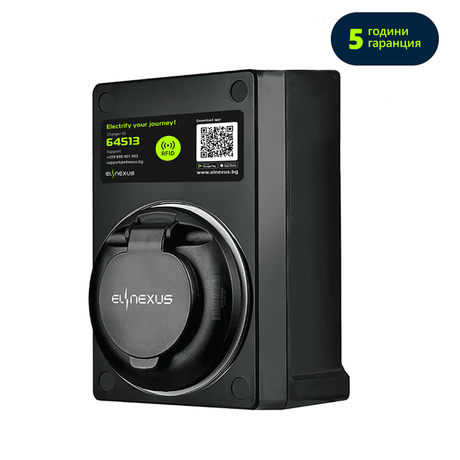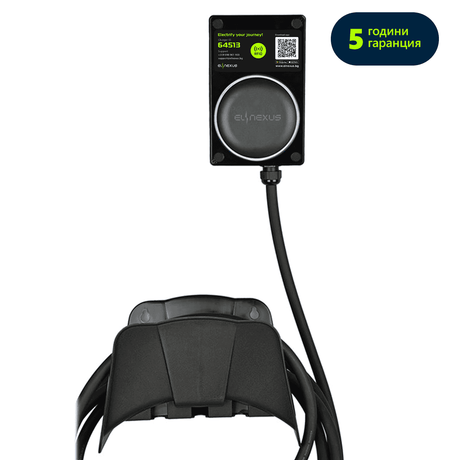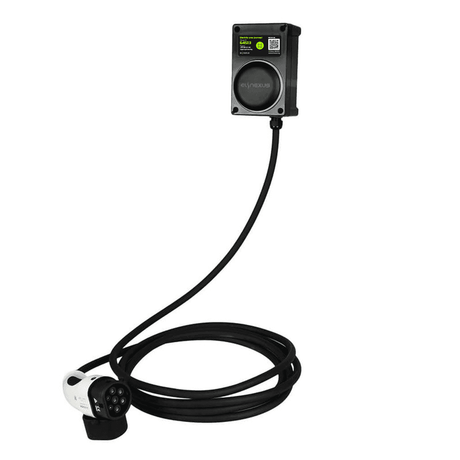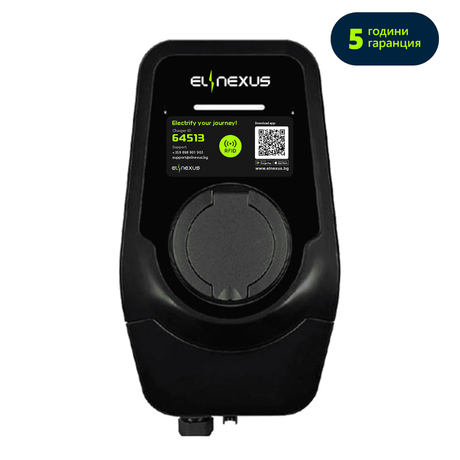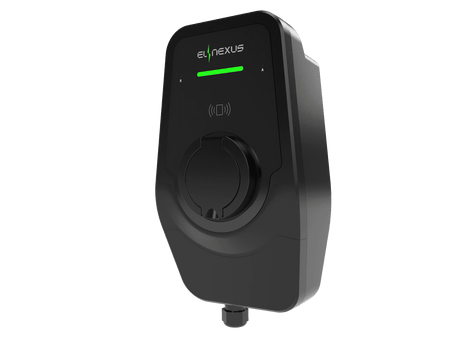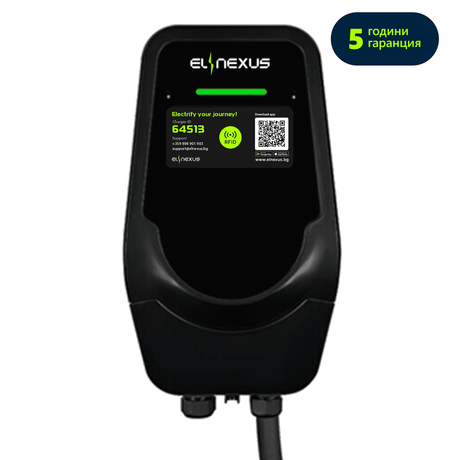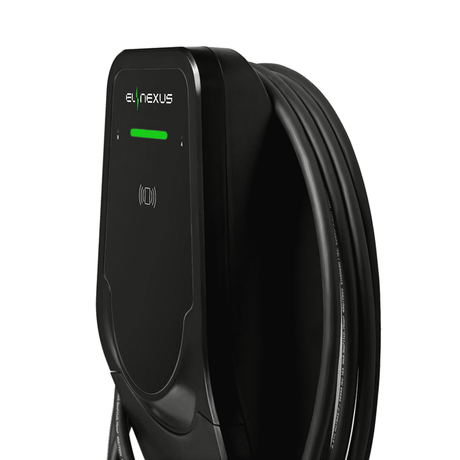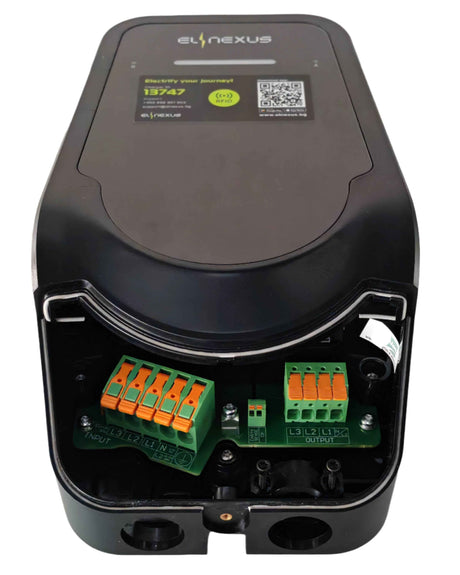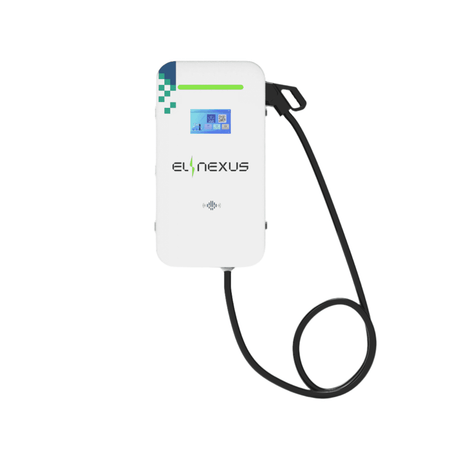Why choose branded charging stations from Elnexus?
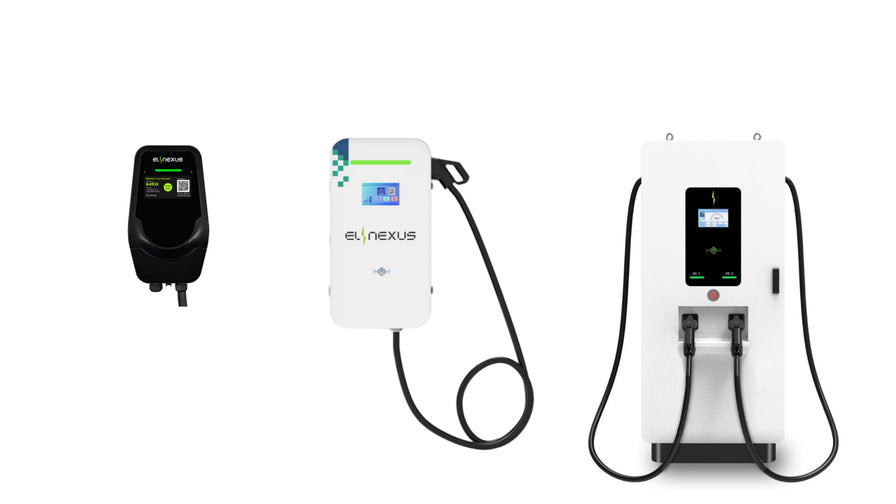
Customized charging stations with your brand
- We create chargers that fully reflect your brand – with your logo, color, packaging, and everything you need for an authentic look.
- Expand your portfolio with our products under your brand, without investment in development.
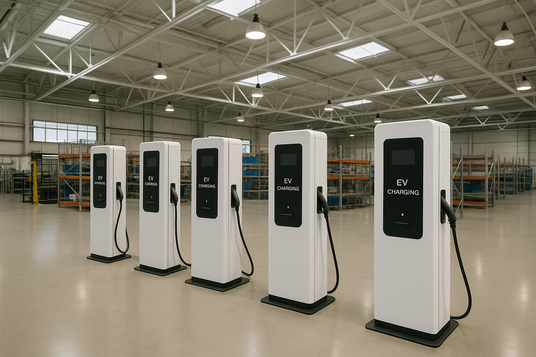
How our services work
1. Share your idea with us
Contact us and tell us what you are looking for – whether you want charging stations for home or public use, what your branding, design or functionality requirements are.
2. We create a solution according to your brand
Our team will work with you to adapt our products to your brand identity – logo, colors, packaging and documentation. You get a ready-to-market solution that looks and feels completely yours.
3. You receive an individual offer
Once we have specified all the details, we will provide you with a specific offer with clearly described technical parameters, deadlines and pricing conditions - without any commitment on your part.
4. Confirmation and start of production
After your approval, we begin the implementation. You make a payment according to the previously agreed terms, and we start the production process.
5. Delivery to you
You will receive your order in a short time - fully finished charging stations, personalized with your brand, ready for sale, installation or distribution.
🟢 Suitable for businesses, traders, partner networks and companies that want to enter the electromobility market with their own brand.
ELNexus charging stations
What are the frequently asked questions from customers?
Types of charging stations
What are the types of electric vehicle charging stations for public (commercial) use?
What are the types of electric vehicle charging stations for public (commercial) use?
There are over 5,000 electric vehicle charging stations operating in Bulgaria, with an expected need for around 50,000 by the end of the decade. Each new charging station that is built and installed must meet certain standards and regulations depending on its capacity. The global trend, including in Bulgaria and Europe, also shows a rapid growth in the need for charging infrastructure.
There are essentially three main types of chargers for electric vehicles (EVs).
- Level 1 chargers: Often supplied with the car and plugged into the same type of socket as your phone charger, TV or blender, using a standard household socket (usually 230V in Europe/Bulgaria). While these chargers may not be very fast, they are easily accessible and easy to use for any EV owner. Most EVs also have special compartments in the boot for carrying the charger. As this is the slowest type of charger, it can take up to 20 hours or more (depending on the battery capacity) to fully charge an EV. This is why Level 1 chargers are usually intended for home use, primarily for overnight charging.
- Level 2 chargers: They operate on the standard mains electricity supply, but are significantly more powerful. Instead of a standard household socket, they require a more powerful outlet – often 230V with a higher amperage (e.g. 32A) or three-phase current (400V). This means they can deliver significantly more power (usually between 3.7 kW and 22 kW) – and can be used as charging stations for home use or public use . A professional electrician is required to install them. Charging an electric vehicle using a Level 2 charger can take between 4 and 8 hours ( highly dependent on the power of the station and the car's on-board charger ). These stations are common for both home use (such as wallboxes) and public use (office buildings, shopping malls, hotels).
- Level 3 chargers or DC Fast Chargers: These stations use direct current (DC) and can provide very high power – typically from 50 kW to 350 kW or even more. This means your electric vehicle can be charged from a nearly empty battery to 80% in about 20-40 minutes (time varies depending on the power of the station and the capabilities of the vehicle). Level 3 chargers are not intended for home use and act as the equivalent of gas stations for electric vehicles. They are usually located around large infrastructure sites such as shopping malls, hypermarkets, hotels and on major roads.
How much do public electric vehicle charging stations cost?
How much do public electric vehicle charging stations cost?
Each of the three types of EV chargers has its own specific costs that buyers should be aware of. As a general rule, the higher the tier (and wattage), the higher the price you should expect.
How much does it cost to install a charger?
How much does it cost to install a charger?
- Level 1: These chargers are essentially portable cables that often come with the car when you buy it. The "installation" costs are zero if you have a standard outlet in your garage or near where you park your car. The cost for a full charge depends entirely on your household electricity rate (for example, the night rate is cheaper).
- Level 2: This is where things get more expensive. The cost of purchasing a wallbox (for home or business) can start from around 200 BGN and reach several thousand, depending on the brand, power and features. Installation by a qualified electrician is mandatory and can cost from several hundred to over a thousand BGN, especially if changes to the electrical installation are required (e.g., running a new cable, installing fuses). Charging with these devices is faster and more efficient than Level 1. The cost of charging at a Level 2 public station varies by operator - it can be per kWh, per hour or a flat fee.
- Level 3 (DC Fast Chargers): These are the most expensive stations. The cost of purchasing and installing a DC fast charger station can vary dramatically – from tens of thousands to hundreds of thousands of leva, depending on the power ( 50 kW , 150 kW , 350 kW ) and the complexity of the installation (including connection to the high-power grid). Charging at such a station is the fastest, but also usually the most expensive for the consumer (prices per kWh are significantly higher than domestic ones).
Can I use Level 1 or 2 charging stations for commercial business?
Can I use Level 1 or 2 charging stations for commercial business?
Yes! It is entirely possible to install charging stations of any level (although Level 1 is too slow for most commercial purposes) in front of a building and charge people for using them, just like public station operators do. The difference is that Level 2 stations will charge more slowly than the fast DC stations (Level 3) that some drivers may be used to for fast charging on the road.
Businesses like hotels, office buildings, restaurants, or even hospitals – places where people are expected to spend a significant amount of time – may prefer Level 2 over Level 3 due to the significantly lower installation and maintenance costs. The fact that they charge more slowly would not be an issue considering the length of time a customer or employee is in the room.
What is DC (direct current) and how is it different?
What is DC (direct current) and how is it different?
DC (Direct Current) essentially allows much more energy to be transferred to an electric vehicle's battery in a shorter amount of time than AC (Alternating Current). Most homes and buildings use AC power because it is the standard for transmitting electricity over long distances and for powering most appliances. Electric vehicle batteries store energy as DC.
- With AC charging (Level 1 and Level 2) , alternating current from the mains enters the car and its on-board charger converts it to direct current (DC) to charge the battery. The speed is limited by the power of this on-board charger (e.g. 7 kW, 11 kW, 22 kW).
- In DC charging (Level 3) , the conversion from AC to DC occurs at the charging station itself, which is much more powerful. The station directly "feeds" direct current into the battery, bypassing the limitation of the car's on-board charger, allowing for much higher charging speeds.
Charging Tesla at ELNexus charging stations?
Charging Tesla at ELNexus charging stations?
It is also important to note that different cars may require different charging connectors . In Europe, the most common standards are:
- Type 2 (Mennekes): AC charging standard (Level 2) for most European and many Asian cars.
- CCS (Combined Charging System): A combined standard that uses the Type 2 connector for AC charging and adds two additional pins on the bottom for DC fast charging (Level 3). This is the dominant fast charging standard in Europe.
- CHAdeMO : An older DC fast charging standard, used mainly by some Japanese manufacturers (e.g. Nissan Leaf older models). It is gradually being replaced by CCS in Europe.
- Tesla Connector: Tesla used to use its own connector in North America, but in Europe their new models and Supercharger stations have largely switched to the CCS standard (or Type 2 for AC). Older Tesla models may require an adapter for CCS stations.
Charging a Tesla at a Supercharger is usually fast and convenient for owners of the brand, with prices varying by location and charging time.
Return on investment
Is it worth investing in a public (commercial) EV charging station?
Is it worth investing in a public (commercial) EV charging station?
There are several points to consider when deciding whether it is worth installing a public charging station:
1. First of all, is there a need for an EV charging station?
- Do people in the area where the potential new station would be installed drive electric cars or plug-in hybrids?
- Is there a trend towards increasing their number?
If so, there may be a demand for new charging stations nearby and your business can meet that need.
2. Would you make a profit (or other benefits)?
- Electric vehicle charging stations are expensive, especially DC fast ones. It is crucial for a business owner to understand the initial investment and potential maintenance fees. If a return on investment can be expected (direct profit from charging fees or indirect by attracting more customers to the core business), the installation may be worth it. This return may take time, but it can be justified in the long run, as more and more countries (including the EU) plan to limit or stop the production of cars with internal combustion engines. Even if direct profit is not sought, the presence of a charging station can improve the company's image, attract a specific type of customer (solvency, environmentally friendly) and be a competitive advantage.
3. Brand reputation
If you want to build a brand that builds convenience to show that you value your customers. Surely this convenience will be appreciated by this potential target who owns electric cars and would attract them again and again just for the convenience of charging their car and additionally spending their money on additional purchases of products and services. So you decide whether it is worth it or not.
What is needed to start a DC charging station business for public use.
What is needed to start a DC charging station business for public use.
When installing a public charging station with higher power - it is necessary if the place is not yours:
- In the case of municipal property - Municipal permission from the relevant municipal administration and conclusion of a lease agreement for the location.
- In the case of private ownership - commercial/private conclusion of a rental agreement.
- permission from the EPA to pull a cable to the charging station from the nearest electrical distribution board or a project for laying a cable route.
- electricity meter batch
- software for monitoring consumption and charging revenues.
- concluding a payment gateway agreement for accepting card payments and paying using your IBAN.
Installation costs
How is the installation service priced?
How is the installation service priced?
Each installation is strictly specific - in most cases the service covers the construction of a faulty current protection with a fuse from the electrical panel to the charging station. The price also calculates the length of the cable with a cross-section of at least 3x6 mm2 for single-phase charging stations up to 7.4 kW, and for more powerful ones up to 22 kV, a 5x6 mm2 cable is used - a copper flexible multi-core cable for safety.
Installation service by an electrician, safety test and operating instructions.
How much does it cost approximately to install a charging station?
How much does it cost approximately to install a charging station?
The average prices on the Bulgarian market for installing a charging station vary on average from 120 BGN to 1000 BGN, depending on the specifics of the site.
In order to plan your budget for installing a charging station, we recommend that you consult our experts for the cost of installing a charging station.
What does the standard installation of a charging station include?
What does the standard installation of a charging station include?
Standard installation refers to conditions under which the device is powered and allows for immediate mounting of the charging station on a wall or stand, wiring and testing, installation instructions.
When may a price change occur during installation?
When may a price change occur during installation?
- When bidding with an additional amount of cable, when the size does not allow direct mounting of the charging station on a wall or stand.
- Carving
- Difficult installation conditions
- In commercial buildings, when compliance with certain regulations and requirements is necessary
How long does it take on average to install a charging station?
How long does it take on average to install a charging station?
Depending on the cable route and challenges - such as excavation - it can take from 1 hour to 8 hours or no more than 1 working day. For example, when installing a charging station in a garage where there is power, the installation takes from 1 to 2 hours.
We can only give you accurate information after an inspection. Therefore, we recommend that you take advantage of our free inspection and consultation.





